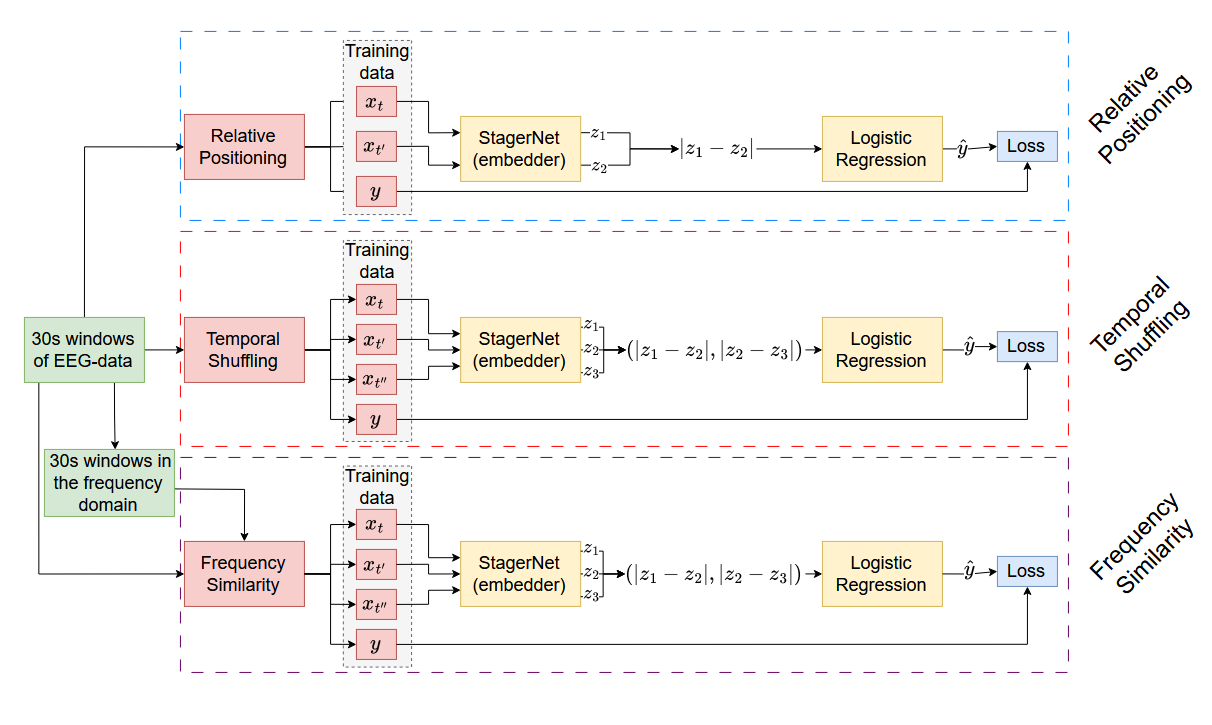A novel dual-stream time-frequency contrastive pretext tasks framework for sleep stage classification
Self-supervised learning addresses the challenge encountered by many supervised methods, i.e. the requirement of large amounts of annotated data. This challenge is particularly pronounced in fields such as the electroencephalography (EEG) research domain. Self-supervised learning operates instead by utilizing pseudo-labels, which are generated by pretext tasks, to obtain a rich and meaningful data representation. In this study, we aim at introducing a dual-stream pretext task architecture that operates both in the time and frequency domains. In particular, we have examined the incorporation of the novel Frequency Similarity (FS) pretext task into two existing pretext tasks, Relative Positioning (RP) and Temporal Shuffling (TS). We assess the accuracy of these models using the Physionet Challenge 2018 (PC18) dataset in the context of the downstream task sleep stage classification. The inclusion of FS resulted in a notable improvement in downstream task accuracy, with a 1.28 percent improvement on RP and a 2.02 percent improvement on TS. Furthermore, when visualizing the learned embeddings using Uniform Manifold Approximation and Projection (UMAP), distinct clusters emerge, indicating that the learned representations carry meaningful information.
PDF Abstract


